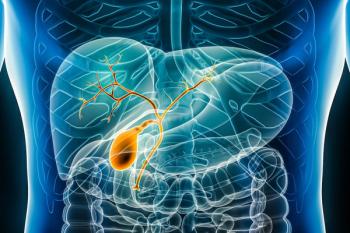
Basophil, Eosinophil Counts Could Be Prognostic Indicators in ET, PV
Key Takeaways
- Elevated absolute eosinophil counts and absolute basophil counts (ABC) are associated with reduced overall survival in essential thrombocythemia.
- In polycythemia vera, higher ABC correlates with increased leukemic and myelofibrotic progression risk.
The finding that basophil counts may have prognostic significance aligns with a growing body of research into basophils in myeloproliferative neoplasms.
Basophil and eosinophil counts may be important predictors of outcomes in certain patients with myeloproliferative neoplasms (MPNs), a new report suggests.
The research,
Basophilia has become a topic of interest in the study of myeloproliferative neoplasms (MPNs), and especially in the context of primary myelofibrosis (PMF), according to first author Priyansh Faldu, MBBS, of the Mayo Clinic, and colleagues. They sought to examine links between basophil and eosinophil counts and patient outcomes in 2 other MPNs: ET and PV.
The investigators used data from 660 patients with ET and 478 patients with PV for their analysis. In the ET group, the investigators found that the median absolute eosinophil count (AEC) was 0.2 x 109/L and the median absolute basophil count (ABC) was 0.07 x 109/L. In a univariate analysis, Faldu and colleagues found that as continuous variables, AEC and ABC were associated with poor overall survival (OS), though they were not associated with other outcomes, such as leukemia-free survival and venous thrombosis-free survival.
In a univariable analysis, AEC ≥0.5 x 10⁹/L and ABC ≥ 0.1 x 10⁹/L were linked with worse survival. When the investigators conducted a multivariate analysis that factored in the International Prognostic Score of Thrombosis for ET (IPSET) risk variables, both AEC and ABC remained negative prognostic factors for overall survival (OS) with HRs of 1.9 for AEC ≥ 0.5 x 10⁹/L (P < 0.01) and 1.7 for ABC ≥ 0.1 x 10⁹/L (P < 0.01).
Among the patients with PV, the median AEC and ABC values were 0.27 x 109/L and 0.12 x 109/L, respectively, the authors said. Neither factor was associated with OS in univariable analysis. Still, Faldu and colleagues found that patients with ABC ≥ 0.1 x 109/L had a lower risk of post-diagnosis arterial thrombosis (HR 0.6; P = 0.03), and patients with ABC ≥ 0.3 x 109/L had inferior leukemia-free survival (HR 6.5; P < 0.01) and myelofibrosis-free survival (HR 2.5; P < 0.01).
The link between ABC and leukemia-free survival held up on multivariate analysis that incorporated several disease-related factors. The association between myelofibrosis-free survival and ABC was sustained when palpable splenomegaly and age were factored in. In PV, AEC ≥0.5 x 10⁹/L did not appear to affect disease progression or thrombosis.
Taken together, the data show that elevated AEC and ABC are linked with shorter survival in ET, and basophilia is linked with leukemic and myelofibrotic progression in patients with PV.
The new report adds to a growing body of research into the role of basophilia in MPNs. A letter
References
- Faldu P, Yousuf M, Abdelmagid M, et al. Eosinophilia and basophilia in essential thrombocythemia and polycythemia vera: Clinical, genetic, and prognostic correlates. Presented at: ASCO 2025; May 30-June 3, 2025; Chicago, Illinois. Abstract e18600.
- Yuen L, Gogakos T, Boiocchi L, Hobbs G, Hasserjian R. Basophilia predicts poorer outcomes in essential thrombocythemia, polycythemia vera, primary myelofibrosis, and myeloproliferative neoplasm, unclassifiable. Am J Hematol. 2025;100(2):320-322. doi:10.1002/ajh.27530
Newsletter
Stay ahead of policy, cost, and value—subscribe to AJMC for expert insights at the intersection of clinical care and health economics.





























































